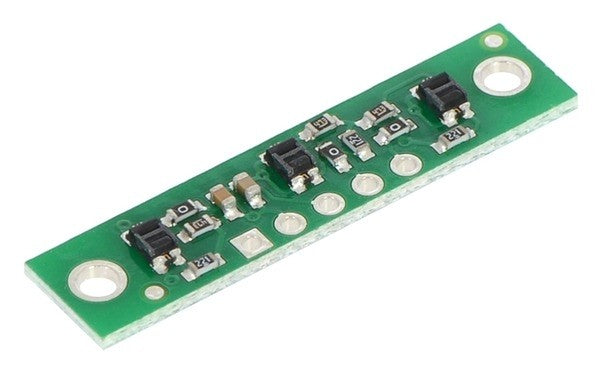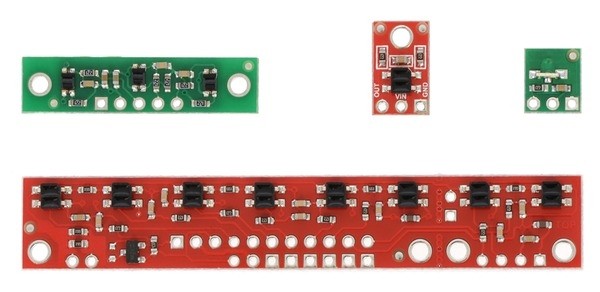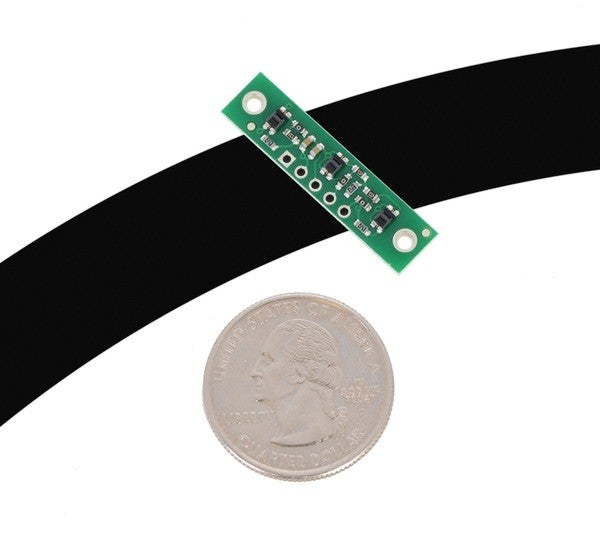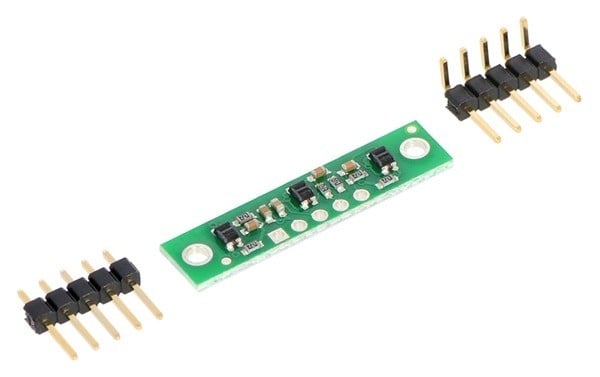Description
The QTR-3A reflectance sensor array is intended as a line sensor, but it can be used as a general-purpose proximity or reflectance sensor. The module is a convenient carrier for three IR emitter and receiver (phototransistor) pairs. With sensors spaced at intervals of 0.375? (9.525 mm) along of the board?s longer axis, this array works well as a minimal detector for line-following robots, as line-following courses are commonly made using 3/4? (19 mm) black electrical tape. The middle sensor is slightly offset along the short axis of the board.
Specifications:
- Dimensions: 32 mm × 8 mm × 3 mm (without header pins installed)
- Operating voltage: 5.0 V
- Supply current: 50 mA
- Output format: 3 digital pulse signals
- Optimal sensing distance: 3 mm
- Maximum recommended sensing distance: 6 mm
- Weight without header pins: 0.6 g
- Use a microcontroller?s analog-to-digital converter (ADC) to measure the voltages.
- Use a comparator with an adjustable threshold to convert each analog voltage into a digital (i.e. black/white) signal that can be read by the digital I/O line of a microcontroller.
- Connect each output directly to a digital I/O line of a microcontroller and rely upon its internal comparator.


spinning white disk with a black line on it. spinning white disk with a black line on it.
Encrypted payment
Your payment information is processed securely. We do not store credit card details nor have access to your credit card information.
Customs Tariff Number:
Country of origin:
This depends on where you are located. After the order is handed over to UPS, the delivery time in Germany is about 2-3 days, within Europe about 1 week.
We ship our orders with UPS (United Parcel Service).
If we still haven't answered your question, you can contact us below and we will get back to you as soon as possible.








